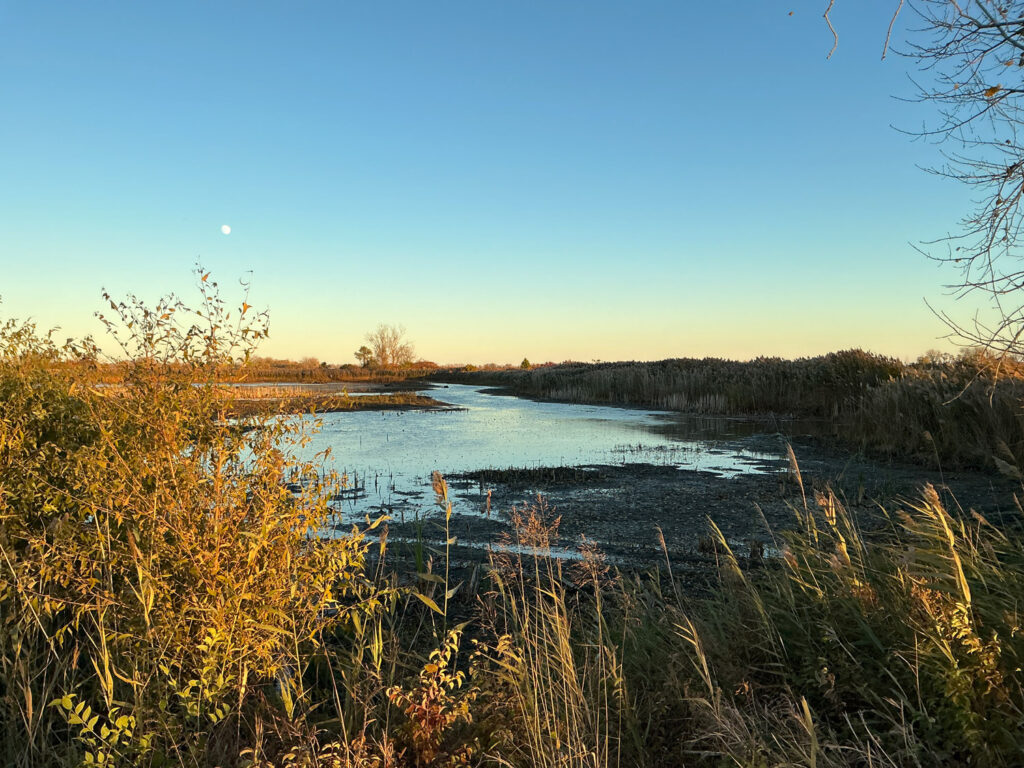Eagle River — You’ve had jam made by Smucker’s and jam made by your grandmother, but have you had jam made by monks? Unless you’ve made the long journey up to Jacob’s Falls, a few miles east of Eagle River at the farthest reaches of the Keweenaw peninsula, the answer is, “probably not.”
Way out here, in the bonafide middle of nowhere, surrounded by thick trees and not much else is The Jampot. It’s a little building painted bright white, with green trim, and a happy red door. Stacks of little jars of sweet jam adorned with simple labels wait behind a bright window facing the street. A square sign reading “JAMPOT” with a painting of a monk on his knees hangs just below the roof.
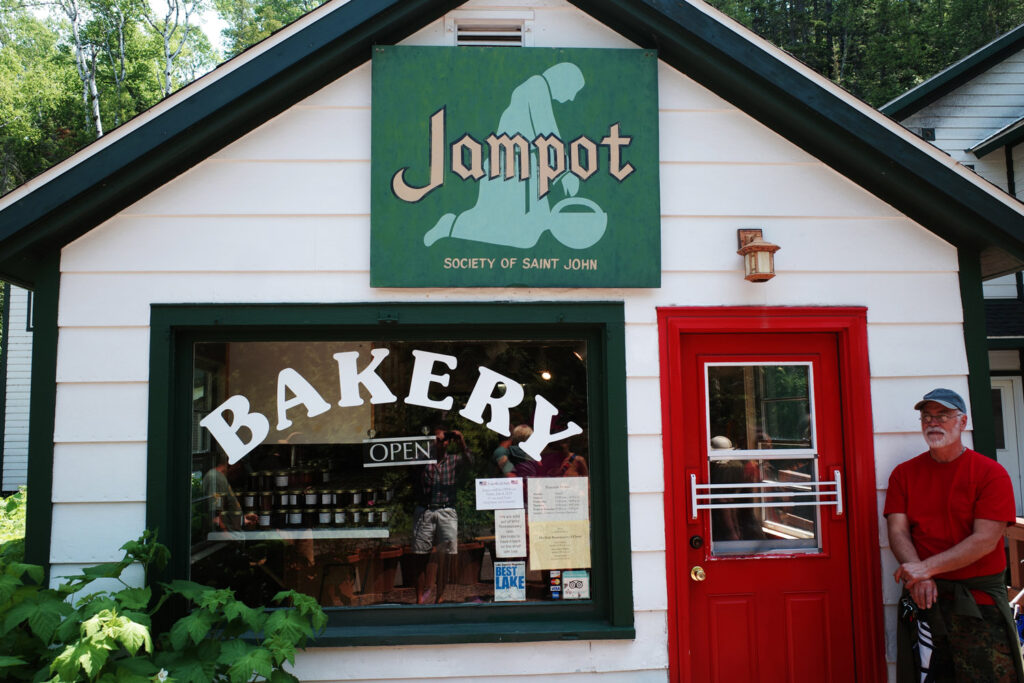
I came to The Jampot on a Wednesday afternoon thinking I would pull off into the gravel parking lot and excite the monks with a rare visitor. I thought I might easily poke around the store for as long as I wanted, meditating a bit on the meaning of life, jam, and the monastery they keep here in this northern corner of Michigan.
But I didn’t do that. I pulled around the corner on M26 and as soon as I saw the old wooden sign marking The Jampot I discovered a line running out the door. At least 30 people waited in a single file line running from the deck down onto the gravel. The unspoken detente surrounding small shops was observed: One person out, one person in.
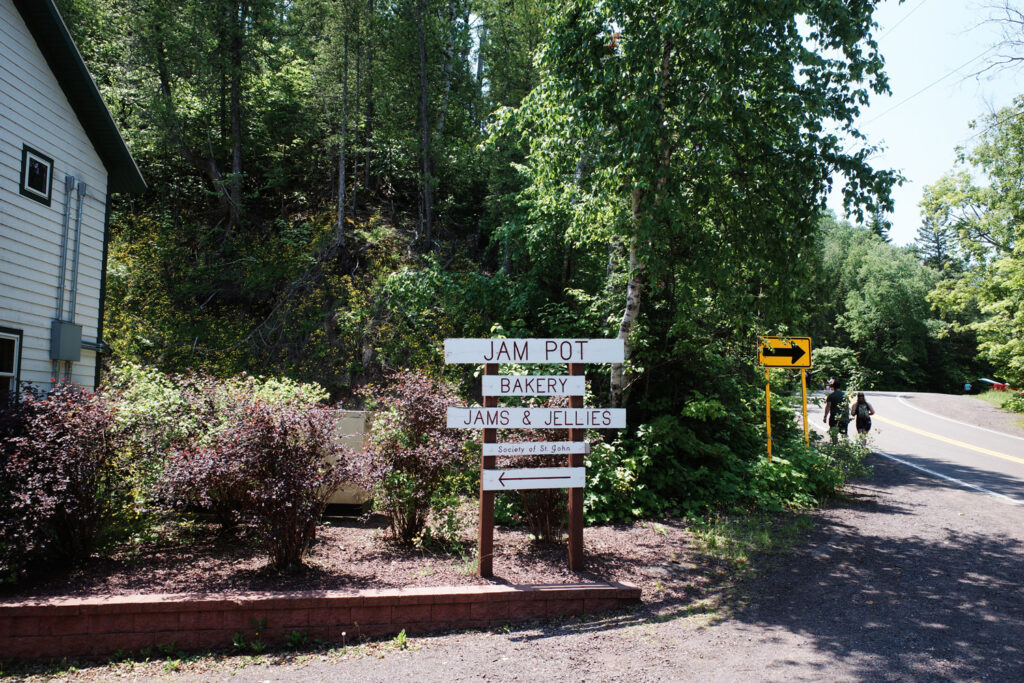
After waiting in line for half an hour, it was finally my turn to pass through the red door and into this coveted hall of jams, jellies and preserves. Inside The Jampot the smell is sweet and warm. Jar after jar of every kind of jam imaginable, including some I have never even heard of. Stacks of pastries, cakes, and cookies waiting at the register. Behind the counter was Father Ambrose wearing a black skullcap, a simple striped apron, and a greying beard held tight with a rubber band near the tip.
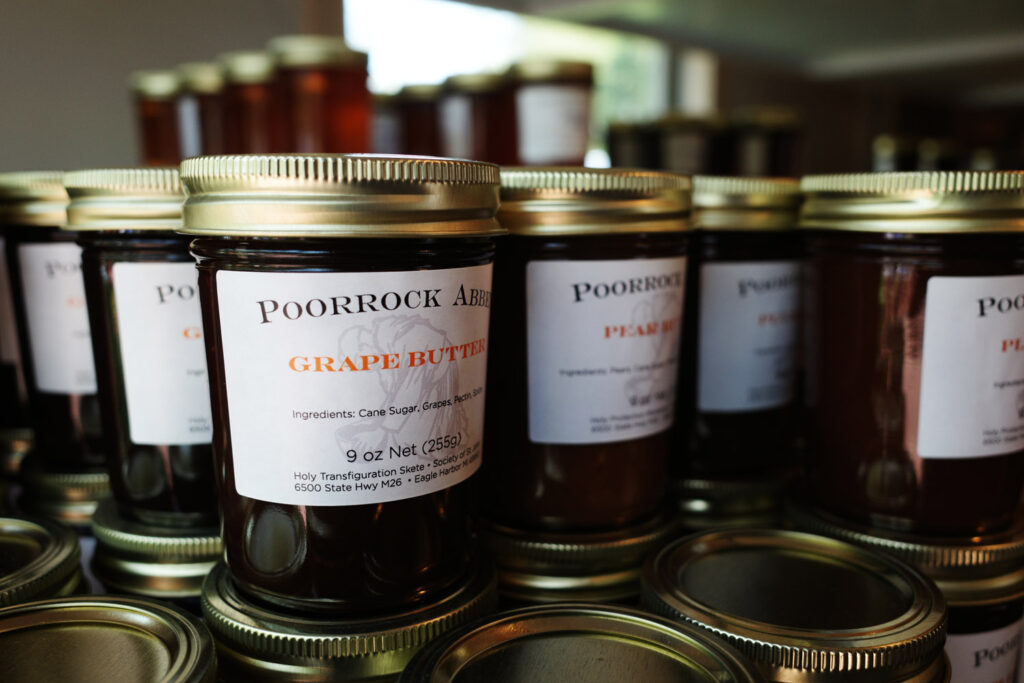
The Jampot sold its first jar of locally sourced preserves in 1986. Over the years they’ve expanded their inventory offering more jams and jellies, along with cakes and cookies. They’ve grown but they still make the best effort they can to source everything as locally and regionally as possible. Though The Jampot is only open May thru October, the monks are here all year.
Father Ambrose told me there are three monks who stay through the winter. I asked him if they get snowed in up here. He told me it’s actually not too bad. They usually get the road plowed in a day or so. He’s been here decades and it’s easy to sense. Speaking with me, even with a shop full of busy customers full of questions and demands, he was gentle, warm, and welcoming with kind eyes and a soft smile.
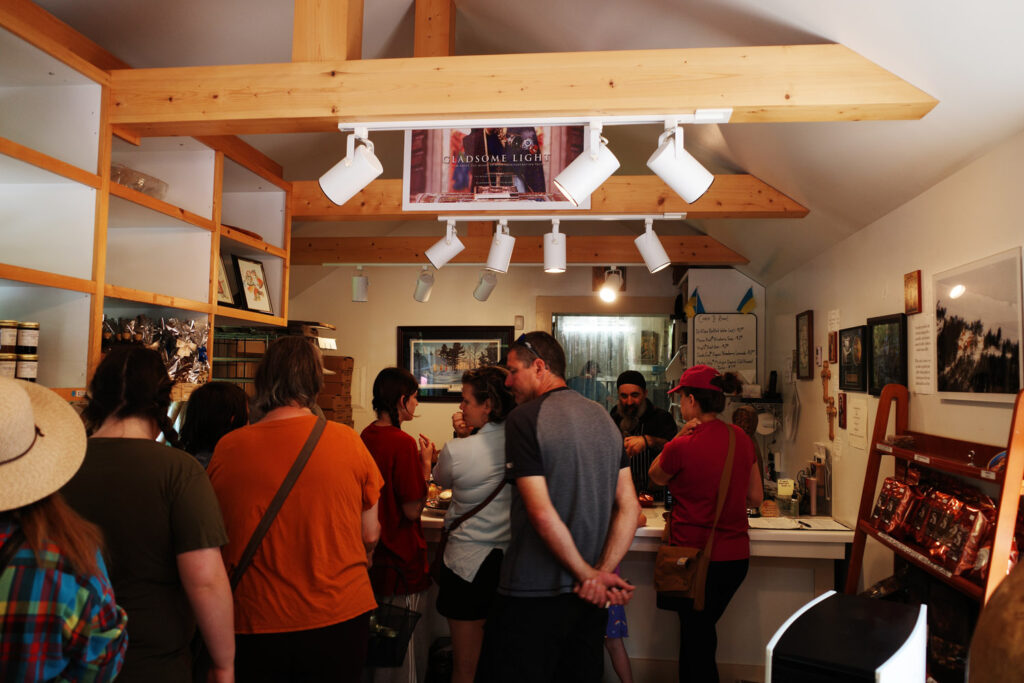
Across the street, on the shores of Lake Superior, is Holy Protection Monastery, a Catholic monastery of the Byzantine Rite. Beautiful gold domes sit on top of reddish brown shingle covered walls. Peeking above the trees, staring out over the seemingly endless water of Lake Superior are three gold crosses.
I didn’t expect a line out the door at The Jampot. I didn’t think I would have to wait 30 minutes just to get inside this little building. This isn’t NYC or Chicago, it’s the end of the world. The truth is I hate waiting in lines. It’s part of the reason I love living up north. We don’t really have lines. But I didn’t hate the line of all these people waiting at The Jampot.
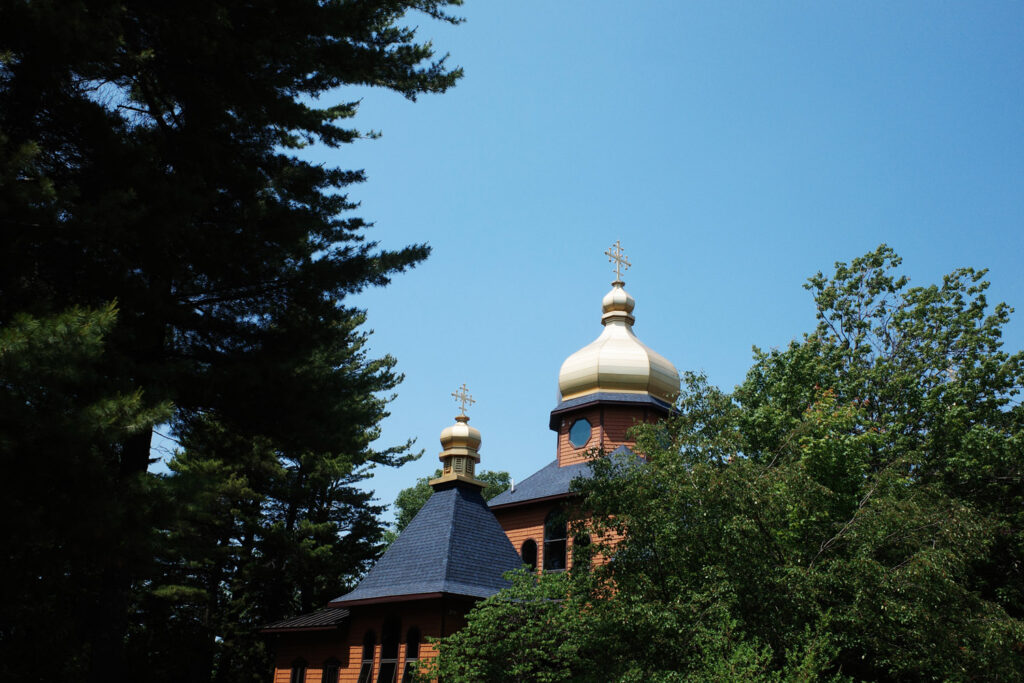
Our world is a materialistic one, a vapid one, a shallow one, and an often ugly one. Sometimes it feels like the good and the beautiful get overwhelmed by the vulgar and the profane. Even the most faithful among us doubt sometimes. In a never ending race to the bottom, it’s hard to see how the good can win.
But it can. If we know where to look, we can see it, or faint glimpses of it. In its own little way the line outside The Jampot is a testament to that fact.
Father Ambrose told me it’s basically just that busy the whole summer. It never slows down until they close in October. People drive north on M26, way up to the northern edge of the Keweenaw and wait in line, with no cellphone service, to buy a few jars of jam made by a few holy monks who selflessly devote their lives to their faith at the end of the world.
O.W. Root is a writer based in Northern Michigan, with a focus on nature, food, style, and culture. Follow him on X @NecktieSalvage.



